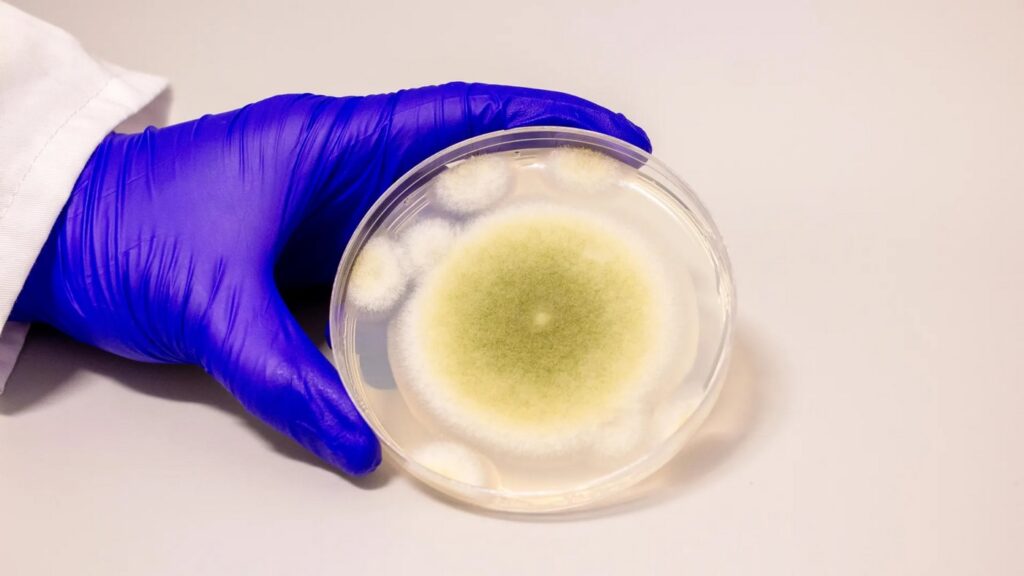
PHILADELPHIA – A deadly fungus, once feared for its lethal potential in ancient tombs, has now been transformed into a promising leukemia treatment, offering new hope in the fight against cancer.
Breaking: Fungal Compound Shows Cancer-Fighting Promise
Researchers have isolated a new class of molecules from Aspergillus flavus, a toxic crop fungus historically linked to mysterious deaths in ancient tomb excavations, including that of the boy pharaoh Tutankhamun. This breakthrough has resulted in a cancer-killing compound that rivals FDA-approved drugs, opening new frontiers in fungal medicine discovery.
“Fungi gave us penicillin,” says Sherry Gao, Presidential Compact Associate Professor at the University of Pennsylvania. “These results show that many more medicines derived from natural products remain to be found.”
Immediate Impact: Ancient Curses to Modern Cures
After archaeologists opened King Tutankhamun’s tomb in the 1920s, a series of untimely deaths among the excavation team fueled rumors of a pharaoh’s curse. Decades later, doctors theorized that dormant fungal spores could have played a role. This theory gained traction when a dozen scientists entered the tomb of Casimir IV in Poland in the 1970s, only to have 10 of them succumb to illness within weeks.
Now, that same fungus is the unlikely source of a promising new cancer therapy, focusing on a class of ribosomally synthesized and post-translationally modified peptides, or RiPPs.
Key Details Emerge: The Science Behind the Discovery
Purifying these chemicals from fungi is notoriously difficult. While thousands of RiPPs have been identified in bacteria, only a handful have been found in fungi. Past researchers often misidentified fungal RiPPs as non-ribosomal peptides, lacking understanding of their synthesis.
“The synthesis of these compounds is complicated,” adds Qiuyue Nie, a postdoctoral fellow and the paper’s first author. “But that’s also what gives them this remarkable bioactivity.”
To uncover more fungal RiPPs, researchers scanned a dozen strains of Aspergillus. Genetic analysis pinpointed a particular protein in A. flavus as the source of fungal RiPPs. This novel approach could be used to find more fungal RiPPs in the future.
Industry Response: A New Hope in Cancer Treatment
After purifying four different RiPPs, researchers found that the molecules shared a unique structure of interlocking rings, named asperigimycins after the fungus. Even without modification, two of the four variants had potent effects against leukemia cells.
Another variant, with an added lipid found in royal jelly, performed as well as cytarabine and daunorubicin, two FDA-approved leukemia drugs.
By the Numbers: Promising Results
- Two asperigymicin variants showed potent effects against leukemia cells.
- The modified variant matched performance of established drugs.
- Asperigimycins had little effect on breast, liver, or lung cancer cells.
Expert Analysis: Unlocking Nature’s Pharmacy
Inside leukemia cells, the gene SLC46A3 proved critical in allowing asperigimycins to enter in sufficient numbers, suggesting a pathway for other remedies to target leukemia cells.
“Knowing that lipids can affect how this gene transports chemicals into cells gives us another tool for drug development,” says Nie.
These findings indicate that asperigimycins likely disrupt cell division processes, showing specificity to certain cell types—a crucial feature for any future medication.
What Comes Next: Future Implications
In addition to demonstrating the medical potential of asperigimycins, researchers identified similar gene clusters in other fungi, suggesting more fungal RiPPs remain undiscovered.
“This is an unexplored region with tremendous potential,” says Nie. “Nature has given us this incredible pharmacy. It’s up to us to uncover its secrets.”
The discovery underscores the potential of natural products in drug development, with researchers eager to explore further, learn from nature, and design better solutions.







